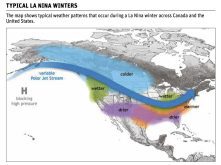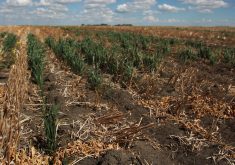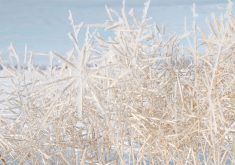El Nino is on its way out and might be gone by the time crops are growing in Western Canada this summer.
Some weather models suggest the waters of the southern Pacific could shift into La Nina by the time harvest arrives.
I see media posts drawing attention to the decline of El Nino and views on how it might impact North American summer weather.
While it can affect where pressure highs and lows are and how long they stay in place, I’m undecided about whether at this early point, we can make a prediction how the change will affect crop yields
Read Also

Huge Black Sea flax crop to provide stiff competition
Russia and Kazakhstan harvested huge flax crops and will be providing stiff competition in China and the EU.
This swing back and forth of warm water from the eastern to the western Pacific, called the Southern Oscillation, affects weather on a broad scale across continents and can affect crop yields, but it is not the only weather-influencing factor and does not determine a crop’s failure or success, at least not in Western Canada.
The oscillation has a stronger impact on crops in South America and the western Pacific, although even there its impact on yields is not the last word.
In an El Nino phase like we have experienced recently, there is a tendency for Australia to have drier than normal condition that hurt crop yields.
Indeed, August through October, which is Australia’s late winter, had the driest three month period on record. But the drought broke and the spring/summer had good moisture.
Crop yields were much better than expected.
In October, forecasts for Australian wheat production were around 25 million tonnes. Reuters newswire now reports that private forecasters are talking of a possible 30 million tonne wheat crop. The barley and canola crops could also prove larger than expected.
On the other side of the Pacific, El Nino tends to bring wetter weather to Argentina, and that is proving true this crop season.
The La Nina in 2021 and 2022 caused a huge drought in Argentina and across the border in southern Brazil. It slashed soybean and corn crop yields.
As we shifted to El Nino in 2023-24, this region enjoyed excellent rainfall, and local forecasters are raising their production forecasts.
However, further north, in central Brazil, the weather has been the opposite. It was good last year but terribly dry and hot this year.
Mato Grosso, Brazil’s top soybean state, is really suffering.
Outlooks for Brazil’s soybean production vary widely. The January U.S. Department of Agriculture forecast for Brazil’s soybeans was 157 million tonnes, but local forecasts see a crop of only about 150 million tonnes or less.
Soybean harvest in Brazil has begun, and things will become clearer as farmers report actual production.
Many Brazilian farmers plant corn as soon as the soybeans are harvested, and in many central areas the seed will go in dry ground, and rain then usually falls off during corn growing season as the country moves into its dry season. So there is a possibility that corn yields will suffer.
What can we expect in the Northern Hemisphere?
The extremes of the El Nino-La Nina oscillation usually happen during the North American winter. Often the oscillation is transitioning from one state to the other and is near neutral during the North American summer.
That is not always the case though.
A weak-to-moderate La Nina held on from 2020 to early 2023.
In 2021 the Prairies had the worst drought in recent memory. Hard red spring wheat yield in Saskatchewan was only 33.8 bushels per acre.
A La Nina was also in play in 2007-08 when the province’s wheat yield was only 27.8 bu.
Does that mean La Nina brings bad production weather to the Prairies?
La Nina was still around in 2022 but the spring wheat yield bounced back to 46.9 bu. an acre.
Wheat yields were also well below trend in 2015 and that was a year when El Nino was gathering strength on its way to a very strong peak by December.
This is not a scientific assessment, but it seems that neither a strong La Nina nor a strong El Nino are good for western Canadian yields. Yields are better when the oscillation is close to neutral.
Looking at the U.S. Midwest, there was a three-year period of strongly below trend corn yields in 2010, 2011 and 2012, a period when La Nina was in play.
Above trend yields in 2016, 2017 and 2018 coincided with near neutral parts of the Oscillation.
The moderate El Nino of 2002 coincided with a below trend yield.
So again, this time in the Midwest, it is not right to say that a particular phase of the Southern Oscillation guarantees a certain yield outcome.
And as the effects of climate change build up, the experiences of past El Nino and La Ninas might not be indicative of what to expect in the future.

















